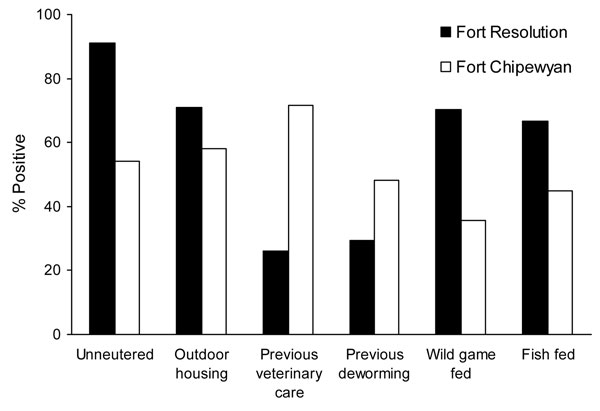Volume 14, Number 1—January 2008
THEME ISSUE
International Polar Year
Dispatch
Dogs as Sources and Sentinels of Parasites in Humans and Wildlife, Northern Canada
Figure 1

Figure 1. Husbandry practices for adult dogs (>6 months of age) in Fort Resolution and Fort Chipewyan, northern Canada. Results of all comparisons were significantly different between the 2 communities (p<0.05).
Page created: July 08, 2010
Page updated: July 08, 2010
Page reviewed: July 08, 2010
The conclusions, findings, and opinions expressed by authors contributing to this journal do not necessarily reflect the official position of the U.S. Department of Health and Human Services, the Public Health Service, the Centers for Disease Control and Prevention, or the authors' affiliated institutions. Use of trade names is for identification only and does not imply endorsement by any of the groups named above.